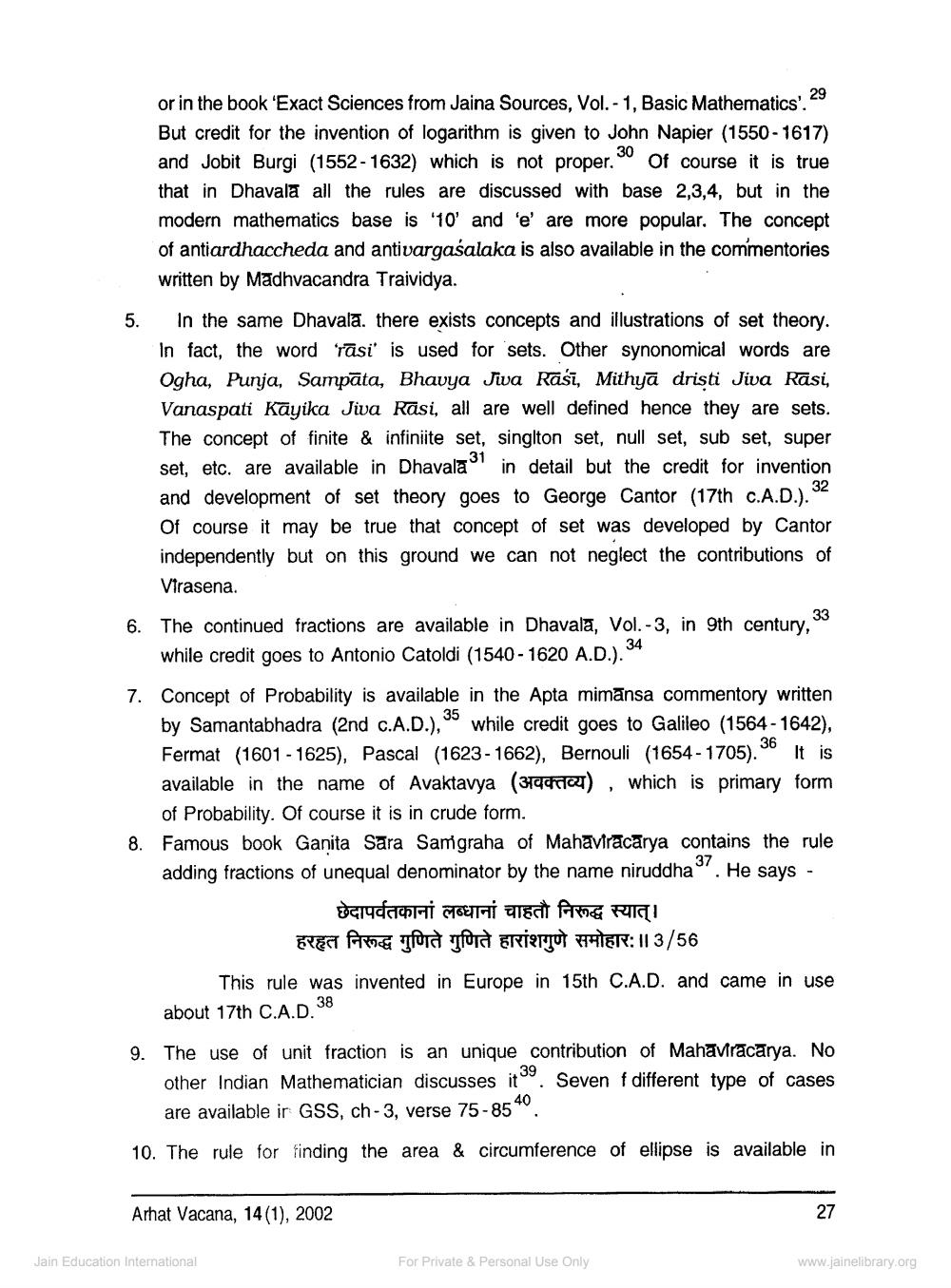________________
5.
or in the book 'Exact Sciences from Jaina Sources, Vol. - 1, Basic Mathematics! 3 But credit for the invention of logarithm is given to John Napier (1550 - 1617) and Jobit Burgi (1552-1632) which is not proper. Of course it is true that in Dhavala all the rules are discussed with base 2,3,4, but in the modern mathematics base is '10' and 'e' are more popular. The concept of antiardhaccheda and antivargasalaka is also available in the commentories written by Madhvacandra Traividya.
In the same Dhavala. there exists concepts and illustrations of set theory. In fact, the word 'rāsi' is used for sets. Other synonomical words are Ogha, Punja, Sampāta, Bhavya Jiva Raši, Mithyā dristi Jiva Räsi, Vanaspati Kāyika Jiva Rasi, all are well defined hence they are sets. The concept of finite & infinite set, singlton set, null set, sub set, super set, etc. are available in Dhavala" in detail but the credit for invention and development of set theory goes to George Cantor (17th c.A.D.).” Of course it may be true that concept of set was developed by Cantor independently but on this ground we can not neglect the contributions of Virasena.
6.
The continued fractions are available in Dhavala, Vol.-3, in 9th century, while credit goes to Antonio Catoldi (1540 - 1620 A.D.)."
7. Concept of Probability is available in the Apta mimansa commentory written by Samantabhadra (2nd c.A.D.), while credit goes to Galileo (1564-1642),
rmat (1601 - 1625), Pascal (1623-1662), Bernouli (1654 - 1705). It is available in the name of Avaktavya (379 ), which is primary form
of Probability. Of course it is in crude form. 8. Famous book Ganita Sara Samgraha of Mahaviracarya contains the rule adding fractions of unequal denominator by the name niruddha". He says -
छेदापर्वतकानां लब्धानां चाहतौ निरूद्ध स्यात्।
FEST Ama yford yield ariargut WHER: 11 3/56 This rule was invented in Europe in 15th C.A.D. and came in use about 17th C.A.D. 38 9. The use of unit fraction is an unique contribution of Mahaviracārya. No
other Indian Mathematician discusses it". Seven f different type of cases
are available ir GSS, ch-3, verse 75-85 10. The rule for finding the area & circumference of ellipse is available in
Arhat Vacana, 14(1), 2002
27
Jain Education International
For Private & Personal Use Only
www.jainelibrary.org




